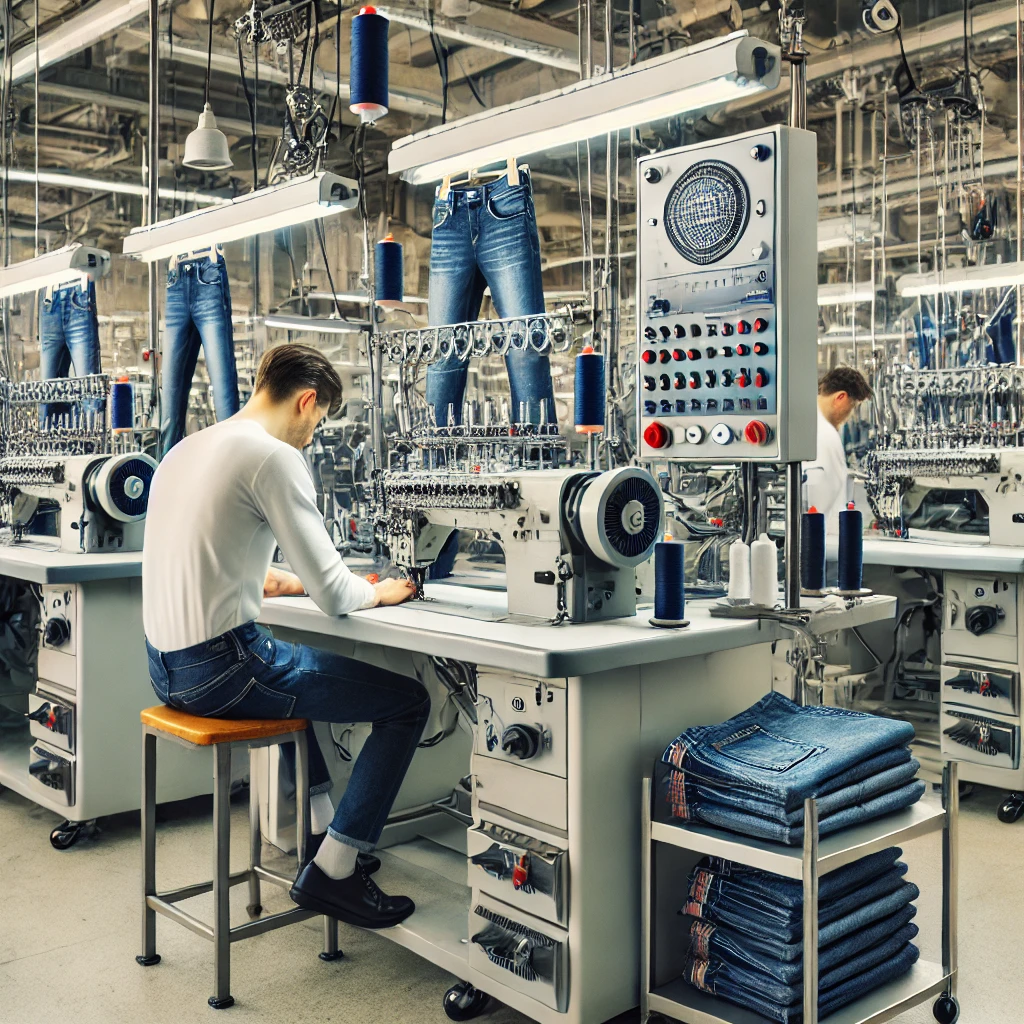Jeans Pant Manufacturing Industry: An Overview
The jeans pant manufacturing industry is a thriving segment of the global apparel market, known for its ever-growing demand and profitability. This essay explores the essential components of setting up a jeans manufacturing unit, including raw materials, machinery, labor requirements, transportation, and profit margins.
Raw Material Availability
The primary raw materials required for manufacturing jeans pants include denim fabric, threads, rivets, and buttons. These are widely available in textile hubs across India such as Ahmedabad, Surat, and Coimbatore.
- Average Raw Material Costs:
- Denim fabric: ₹200-400 per meter.
- Threads: ₹30-50 per spool.
- Rivets and buttons: ₹50-100 per set.
- Packaging materials: ₹10-20 per unit.
Key Suppliers:
Machinery
Machinery plays a crucial role in determining the efficiency and quality of production. Two categories of machinery are commonly used:
Semi-Automatic Machinery:
- Cost: ₹3,00,000 to ₹5,00,000.
- Includes stitching machines, overlock machines, and manual rivet presses.
- Requires more manual intervention, making it suitable for small-scale setups.
Fully Automatic Machinery:
- Cost: ₹8,00,000 to ₹12,00,000.
- Comprises automated cutting machines, computerized stitching units, and rivet presses.
- Reduces manual labor significantly, increasing production speed and consistency.
Suggested Suppliers:
Labor Requirements
Labor is an essential component for operating machinery, quality checks, and packaging. The requirements vary based on the type of machinery:
- Semi-Automatic Setup:
- Labor required: 20-25 workers.
- Average wage: ₹10,000-15,000 per month per worker.
- Fully Automatic Setup:
- Labor required: 10-15 workers.
- Average wage: ₹10,000-15,000 per month per worker.
Transportation Expenditure
Transportation is vital for sourcing raw materials and delivering finished products to the market.
- Local transportation: ₹30,000-50,000 per month.
- Interstate/export transportation: ₹1,00,000-2,00,000 per month.
Space Requirements
The manufacturing unit should accommodate machinery, storage, and worker facilities. The required space is:
- Semi-Automatic Setup: 2,000-3,000 sq. ft.
- Fully Automatic Setup: 1,500-2,000 sq. ft.
Rental Cost: ₹30,000-50,000 per month depending on the location.
Total Expenditure
| Category | Semi-Automatic (₹) | Fully Automatic (₹) |
|---|---|---|
| Machinery | 3,00,000 – 5,00,000 | 8,00,000 – 12,00,000 |
| Raw Materials (Monthly) | 2,00,000 – 4,00,000 | 3,00,000 – 5,00,000 |
| Labor (Monthly) | 2,00,000 – 3,75,000 | 1,00,000 – 1,50,000 |
| Transportation (Monthly) | 30,000 – 50,000 | 1,00,000 – 2,00,000 |
| Space Rent (Monthly) | 30,000 – 50,000 | 30,000 – 50,000 |
| Total Initial Cost | 5,60,000+ | 12,30,000+ |
Profitability
Average Production Capacity:
- Semi-Automatic Setup: 800-1,500 jeans/month.
- Fully Automatic Setup: 3,000-5,000 jeans/month.
Selling Price:
- Average selling price per pair: ₹800-2,000.
| Setup Type | Monthly Revenue (₹) | Monthly Profit (₹) |
| Semi-Automatic | 6,40,000 – 15,00,000 | 2,50,000 – 4,50,000 |
| Fully Automatic | 24,00,000 – 50,00,000 | 12,00,000 – 25,00,000 |
Conclusion
The jeans manufacturing industry offers substantial profitability with proper planning and resource allocation. While semi-automatic setups are ideal for small-scale operations, fully automatic setups provide higher productivity and scalability. Entrepreneurs can leverage this opportunity to tap into the growing demand for denim products globally.
